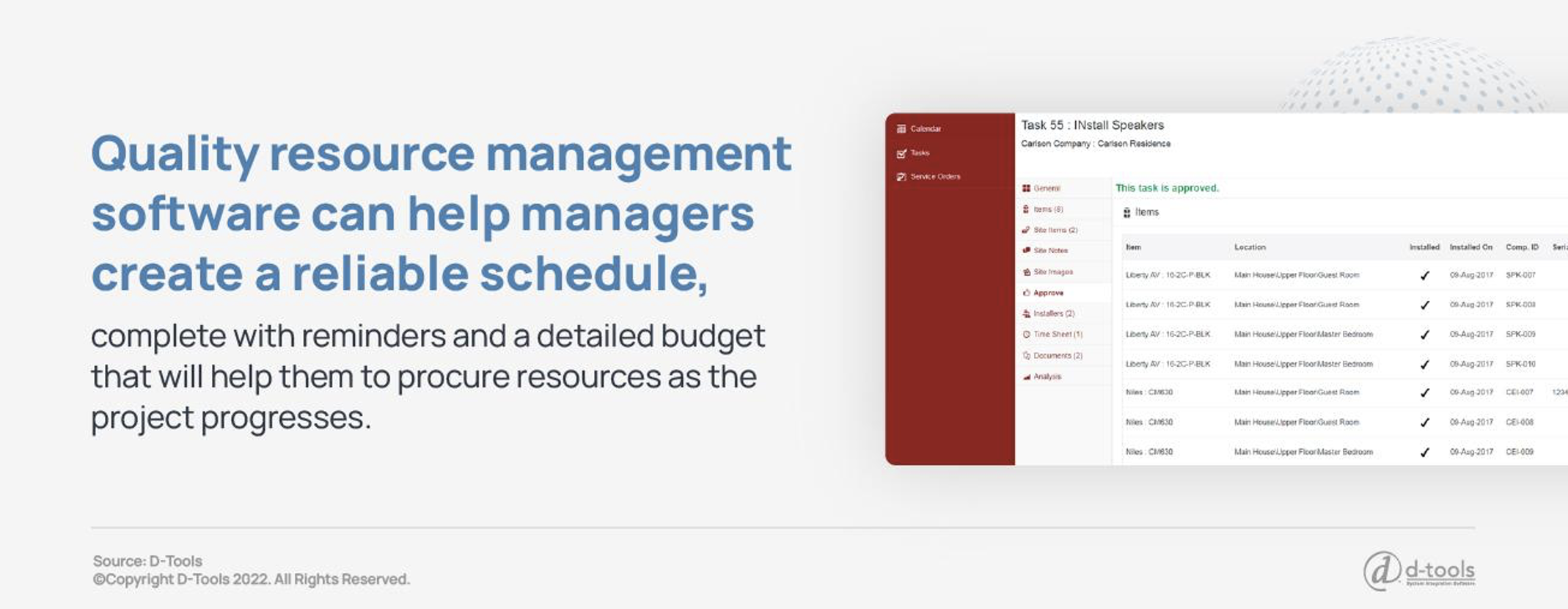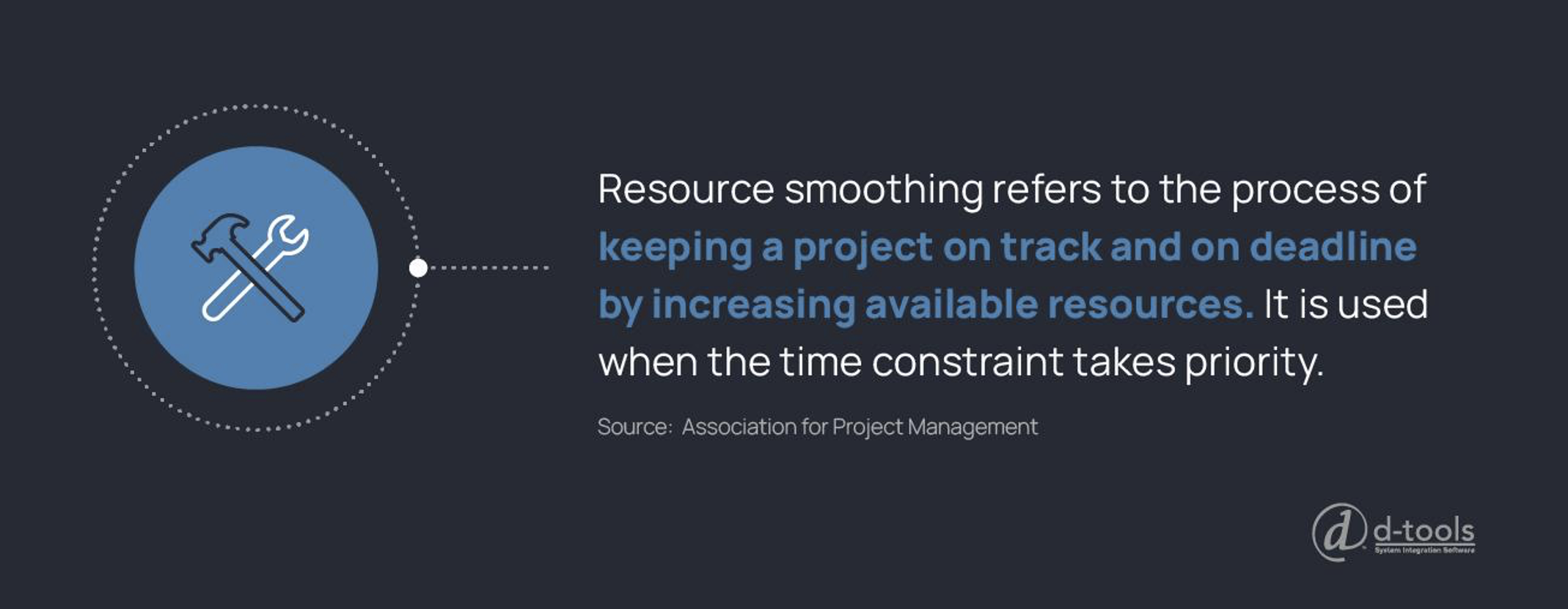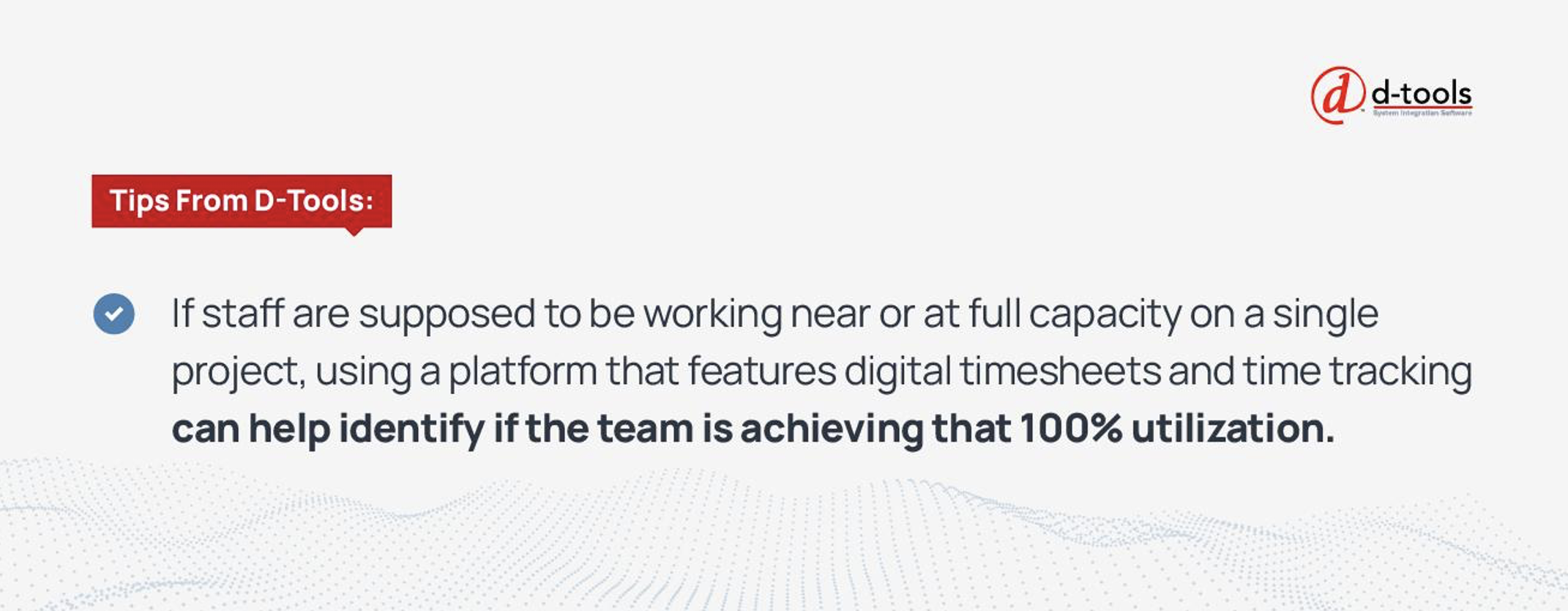4 Key Factors in AV Project Resource Management
Whether you’re looking to improve your AV project and resource management process or are just getting started managing your first major project, it’s important to understand how project resource management works and which factors are most important.

What Is Project Resource Management?
Whether you’re looking to improve your project and resource management process or are just getting started managing your first major project, it’s important to understand how project resource management works and which factors are most important.
The success of any project hinges on the availability of adequate resources, but managing and tracking those resources is a complex process in itself. Resource and project managers need to work together to identify resource requirements, secure those resources, and then allocate them appropriately throughout a project’s duration.
Project resource management refers to the overall management of the resources needed for a project to be successful, and it consists of multiple phases:
● Identifying and acquiring resources
● Scheduling and allocating resources
● Overseeing and evaluating resource utilization
A daily selection of features, industry news, and analysis for tech managers. Sign up below.
● Making adjustments as necessary
Effective project and resource management needs to take place throughout every project phase, and it helps to ensure that projects don’t run out of essential resources before their completion.
A single project may involve multiple types of resources, making management a somewhat convoluted process. Common project resources include:
● Labor and staff hours
● Materials for the completion of a physical project, like signage or manufacturing supplies
● Equipment and tools, including software or machinery
● Facilities, such as land or buildings
● Finances
Each resource needs to be carefully monitored, since the lack of a single resource can impact the entire project.
The Importance of Project Resource Management
Project resource management is essential to a project’s success, but it can also impact other factors like client satisfaction and staying within a budget.

With diligent scheduling and allocation, you may be able to reduce your project costs. Identifying and acquiring your resources earlier on in the project means you might be able to get discounts for purchasing materials and products in bulk, or might get a discount on machinery rentals when you’re able to book them well in advance.
Resource management also lets you monitor exactly how your resources are being used. You can see potential resource shortages ahead of time, and can make better-informed decisions about your project and budgeting efforts as a result.
When you carefully monitor your resources throughout the entire project, you’ll know where you stand at every phase of the project. You can maximize staff productivity without overloading your team, use your resources strategically, and avoid project delays and bottlenecks caused by lack of resources.
[ PPDS, D-Tools Partner for Cost-efficient Project Completions to AV Integrators ]
4 Key Factors to Consider for Project Resource Management
Project and resource management is a multi-faceted process. Successful resource management depends on the following four key factors:
To effectively manage resources, it’s important to have a detailed understanding of the project from the start. Developing such an understanding requires that project managers, resource managers, and other key staff work together and share all project information to establish consistency across the teams.
The more detailed and specific the project plans are, the more accurate the project budget can be. That initial budget will evolve with the project, but establishing a comprehensive budget will allow the resource manager to more accurately identify and source resources.
It’s also important to outline the project timeline, relevant deadlines, and the work required to complete it. All these factors can place restraints on resources. For example, if a certain task needs to be completed by a particular date, extra staffing or rush fees might be required to meet that deadline.
Also called capacity planning, resource planning plays a key role in keeping a project moving smoothly. Accurate, detail-oriented resource planning can help prevent issues later on, like resource shortages, reducing the chance of delays or obstacles occurring.
During the resource planning phase, a resource manager needs to develop a means of identifying the necessary resources and then acquiring and tracking them. This can be simpler for a basic project, like a marketing campaign, but quickly becomes more complicated for a large-scale project that uses many resource types, like the design and installation of audio visual and HVAC controls for a new building construction.
Equally as important as identifying which resources have been procured is the process of identifying and monitoring resources that have yet to have been sourced. In a multi-phase project spanning a year or more, it may be impractical to procure all resources in the beginning.
In this case, the resource manager will need a reliable schedule, complete with reminders and a detailed budget, that will help them to procure resources as the project progresses. Quality resource management software can help establish these types of reminders and tracking throughout the project.

It is also possible that a resource manager may find a project requires more human resource hours than the current staffing allows. This shortage might be a shortage in actual work hours, or a shortage in talent, specialization, and overall skill.
This is one example of why resource planning needs to be comprehensive and conducted early on in a project; it may be necessary to hire a specialist or additional staff, which can take time. With detailed resource planning, a resource manager can identify the specific skills, the amount of weekly hours, and even the time period when a new staff member or consultant will be most needed.
Once a project begins, resource optimization becomes an ongoing process. Even with careful estimating and budgeting, changes are sure to occur, resulting in changes in resource needs. A project’s scope might increase or decrease, requiring more or less resources. Similarly, shifting staffing arrangements may mean that a team member is pulled away from the project, reducing the work hours available and requiring some strategic decisions to address the problem.
Resource leveling and smoothing can help adjust to these changing parameters and ensure that the project continues to progress.
Resource leveling refers to the process of making adjustments to ensure the project still meets its goals. For example, if a staff member has been pulled off of the project, you might extend the project deadline, so your existing staff can still complete the project without having to work more than their allocated hours. Adding a few weeks or months onto the project would let staff work on the project longer, making up for the lack of a staff member.

Extending a deadline isn’t always possible, so instead of resource leveling, resource smoothing might be a better option. Resource smoothing refers to the process of keeping a project on track and on deadline by increasing available resources. This might mean replacing that staff member with a new team member, or allocating more of the team members’ weekly hours to working on the project to make up for the difference.
To effectively optimize resources, it’s important to develop a method of calculating resource utilization. This calculation method needs to be ongoing throughout the project’s duration, and it will also provide essential data that can contribute to the post-completion project review and assessment.
This calculation can be easier said than done, and highlights the value that resource management software offers. Not only do resource managers need to track physical inventory and its use, but tracking team performance metrics like staff hour utilization, especially across a large team, is no small feat.

Using a platform that features digital timesheets and time tracking can help. Resource managers can see at a glance how many staff hours are used each week, but more importantly, they can see how many of each staff member’s weekly hours are billed to the project. If staff are supposed to be working near or at full capacity on a single project, this metric can help identify if the team is achieving that 100% utilization. Similarly, the calculations can reveal if staff are over-allocating time to a project. A resource manager can raise that issue to a project manager, and staffing changes might be necessary to address the problem.
This resource utilization calculation can also help a manager to identify potential issues before they become large problems. Calculating utilization weekly means that managers can quickly spot abnormalities, like unusually high resource usage. The calculations also allow a manager to monitor remaining resources and identify situations where the project may be heading toward a resource deficit. Identifying these situations early on gives a manager time to either allocate additional resources or alert the team to the problem, making adjustments to stretch those resources.
It’s essential to implement project resource management throughout every stage of a project. Resource management software can make the task of managing resources easier, less time-consuming, and more accurate and effective — even in tough times.
Software streamlines many processes, like timesheet collection and resource utilization calculation, and establishes a digital record of resource use throughout the entire project. With options for notifications and shared calendars, it’s easy to see why implementing the right technology alone increases productivity and profits. Plus, software can help avoid human errors and omissions, maximizing resource management’s effectiveness.
[ D-Tools Broadens its Line of Business Software Solutions at ISE 2022 ]
Both D-Tools Cloud and System Integrator (SI) software products offer advanced features for time tracking, scheduling, and more, making them ideal choices for project and resource management. Either platform can support your sales, proposal, procurement, and project management needs, serving as an all-in-one solution for orchestrating business operations. More information and free trials of both solutions are available at d-tools.com.

Josh Carlson is the senior marketing communications manager at D-Tools. He has extensive leadership in the audio/visual and technology industries, most recently working for a business-to-business software company for the past six years. Specialties include brand recognition, business development, partner acquisition, copy-writing, trade show & event management, sales & marketing communications, and PR.
